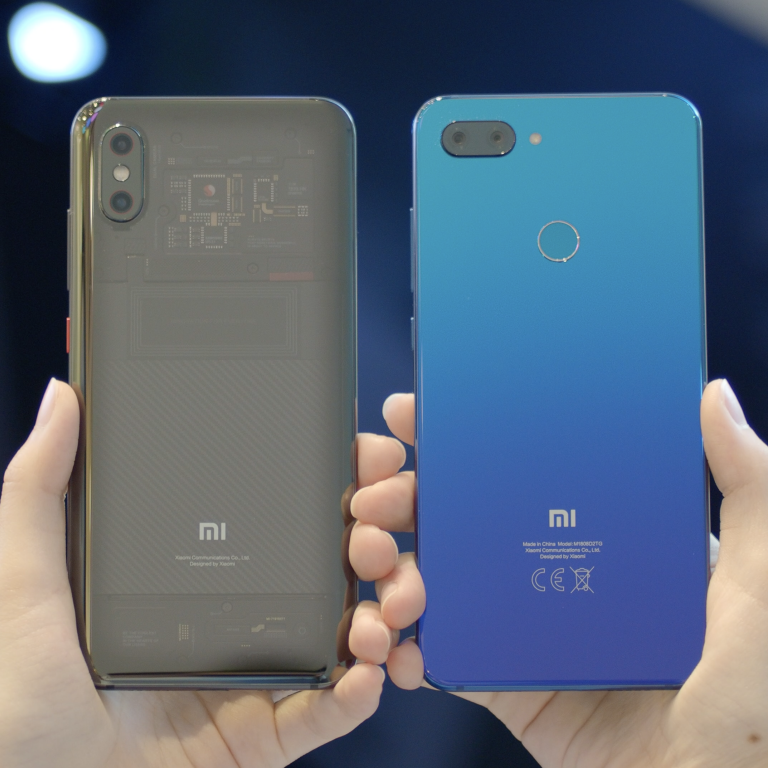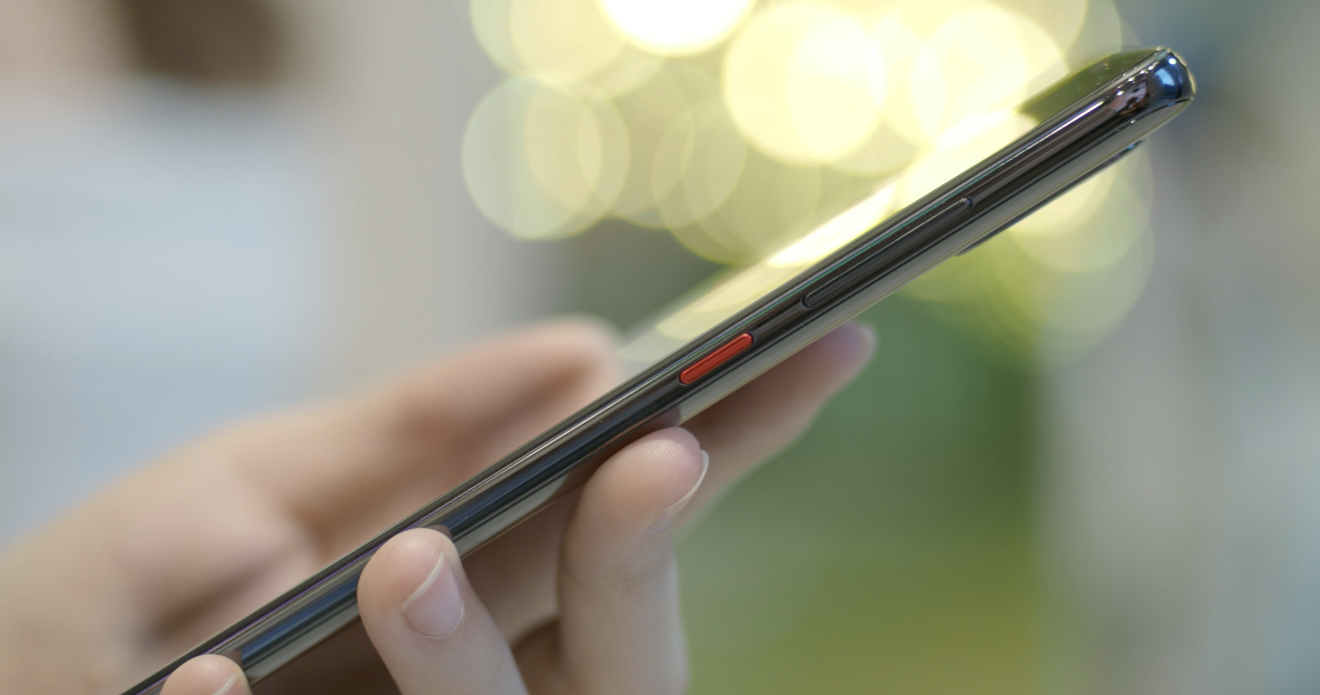
Xiaomi’s new Mi 8 handsets are pretty but boring
The Pro has an in-screen fingerprint sensor, the back of the Lite is a fingerprint magnet

Mi 8 Pro
The high-end model packs solid power and a cool design, even if it is a little fake. And I like how the phone feels in the hand, but I can’t help but be bothered by some weird small touches.
The Mi 8 Pro was first launched in China in September as the “Mi 8 in-screen fingerprint sensor version”, which came in two variations: Twilight Gold and one with a transparent back. For Hong Kong, Xiaomi’s only launching the one with the transparent back.

To be honest, even though it’s obviously fake when you look at it up close, I didn’t mind it. The phone is sleek overall and definitely unique, and I think it looks quite cool.
But Xiaomi loses cool points for a weird design quirk. While some of the fake chips are labeled with apparently real names (the “CPU” says Qualcomm), others have bizarre slogans on them. One says “Always believe that something wonderful is about to happen” while another says “Be the coolest company in the hearts of our users.” Funnily enough, one of the chips is labelled Samsung. Sure, they are legitimately a parts supplier to many smartphone makers, but it’s still funny to see the name of a competitor on the back of Xiaomi’s phone!
I can say I would honestly consider buying the phone if it didn’t have all of those cheesy lines (there’s at least five of them!) on the phone… oh, and if they hadn’t made the side home button red. It just looks tacky.

Apart from the unique design, the rest of the phone doesn’t seem to stand out that much from a normal flagship, but that’s not necessarily a bad thing. It runs the Snapdragon 845 chipset with 8GB of RAM and 128GB of storage. But it also has what Xiaomi’s latest slider, the Mi MIX 3, lacks: It supports both face unlock and has an in-display fingerprint sensor.
During the short time we spent with it, we were quite impressed with how fast and smoothly the fingerprint sensor worked. The sensor itself is only on a small part of the screen, but a tap anywhere on the display brings up the icon, allowing you to find the right spot easily.

The Mi 8 Pro has dual cameras on the back. One is a 12MP wide angle lens and the other a 12MP telephoto lens, and it has a 20MP front camera. Like a lot of phones out there, it boasts AI capabilities, which let you blur the background and can supposedly adjust photos according to the objects it recognizes (like Huawei’s flagships). Just like the Mi MIX 3, the camera app also comes with a whole line of filters and effects that you can apply while taking pictures with the portrait mode.
Here's why smartphones have multiple cameras
The phone costs HK$3,999 (US$510), cheaper than in mainland China, where it costs 3,699 yuan (US$532).
Mi 8 Lite
The second phone launched for Hong Kong today -- the Mi 8 Lite -- is a budget handset with mid-range specs. The good thing is it’s light and cheap. The bad news is that’s about the only exciting thing here.

The gradient color back that Xiaomi says can work as a mirror looks pretty nice at first sight... but the problem is that it’s almost immediately covered with fingerprints as soon as you lay your hands on it. We had to constantly wipe it for better-looking photos and videos, but nobody would bother to wipe their phones every five minutes in real life, and the phone would just end up looking constantly nasty.
It runs a mid-range chipset Snapdragon 660, coming with 6GB of RAM and 128GB of storage. It puts the fingerprint sensor on the back, with no face unlock or in-display fingerprint sensor. Its dual AI cameras setting on the back are 12MP + 5MP, with a 24MP selfie camera. The camera app also has all the same “AI” backgrounds and filters that come in the Mi 8 Pro and Mi MIX 3.

Both phones will be launched in Southeast Asia later this month, with no specific dates yet.
How Xiaomi forged a unique path
For more insights into China tech, sign up for our tech newsletters, subscribe to our Inside China Tech podcast, and download the comprehensive 2019 China Internet Report. Also roam China Tech City, an award-winning interactive digital map at our sister site Abacus.
For more insights into China tech, sign up for our tech newsletters, subscribe to our Inside China Tech podcast, and download the comprehensive 2019 China Internet Report. Also roam China Tech City, an award-winning interactive digital map at our sister site Abacus.


